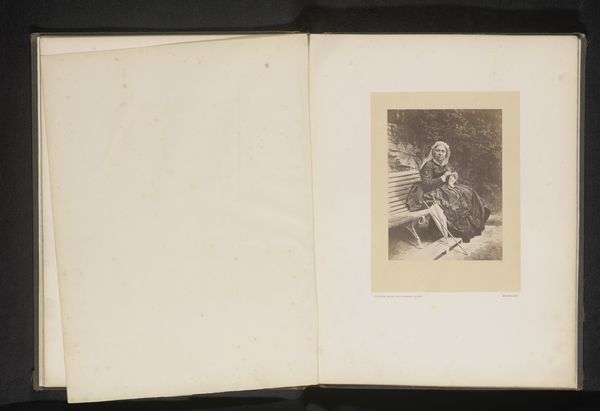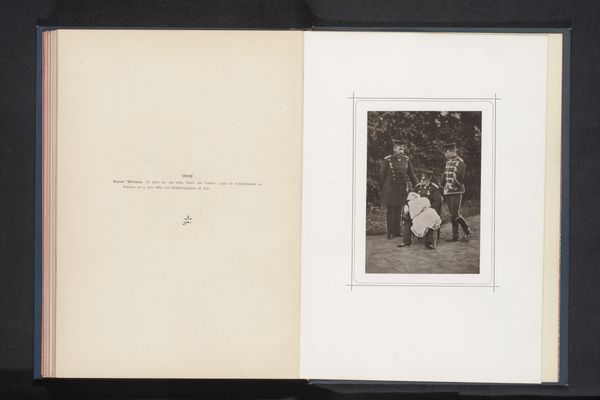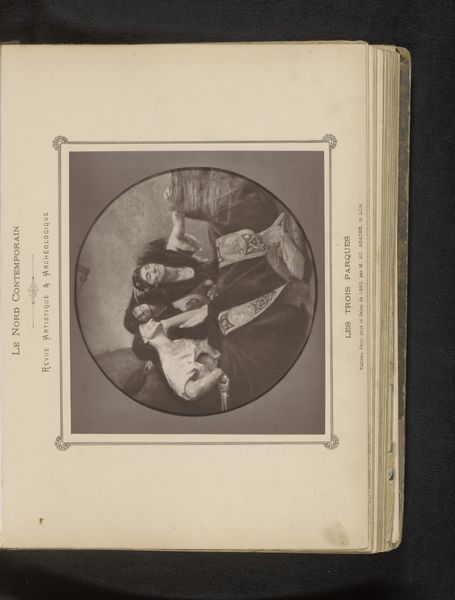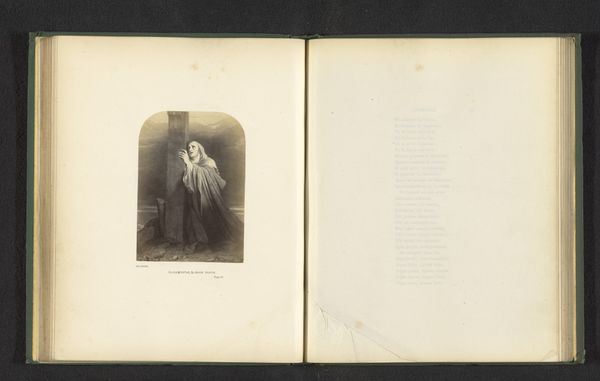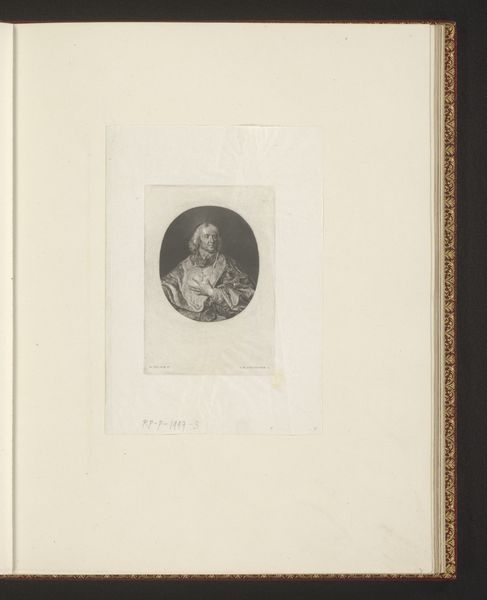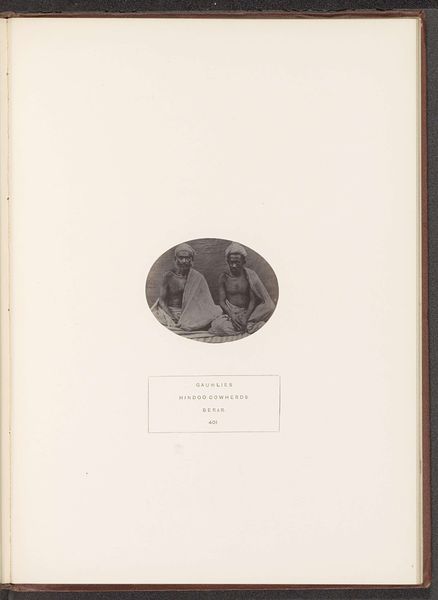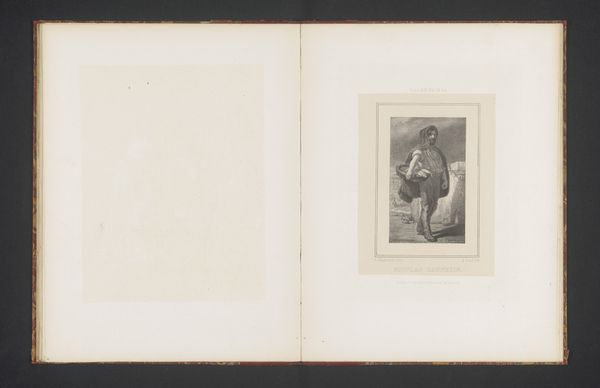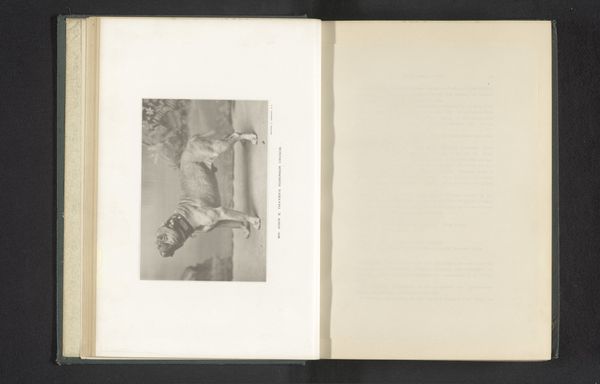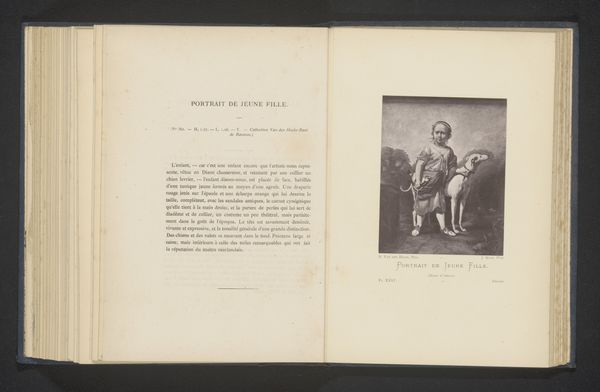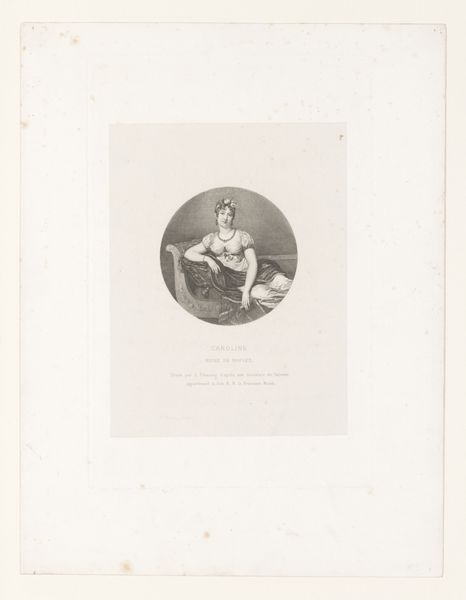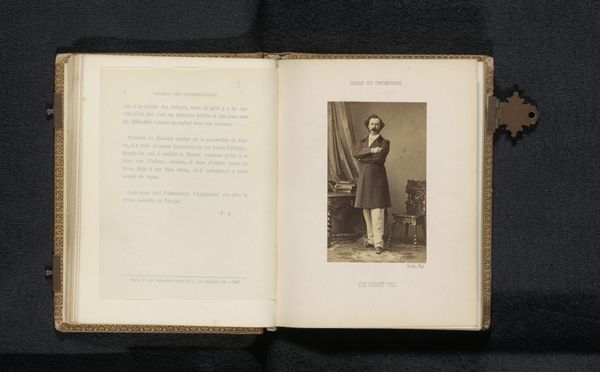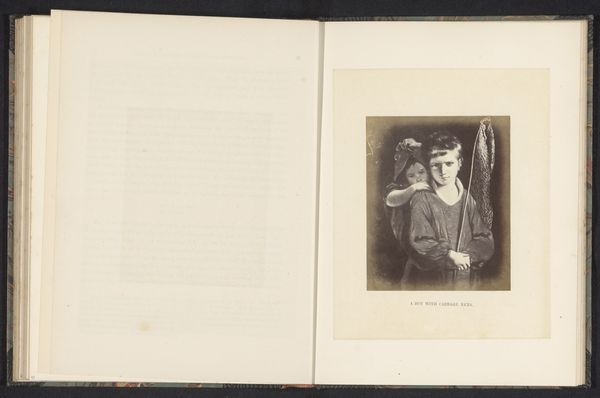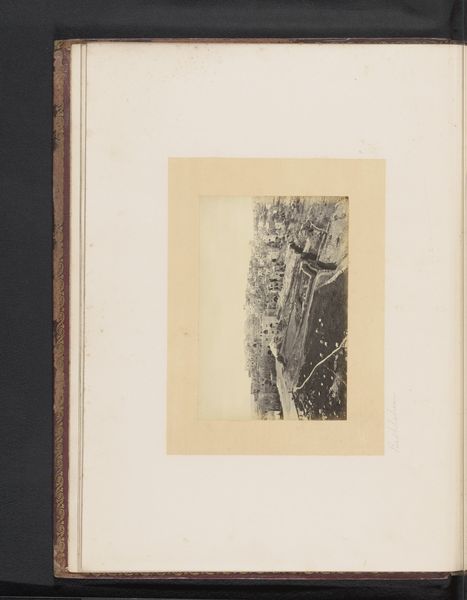
Dimensions: width 89 mm, thickness 60 mm
Copyright: Rijks Museum: Open Domain
Editor: We're looking at a gelatin-silver print titled "Portret van een onbekende jonge vrouw met een waterkruik," which translates to "Portrait of an unknown young woman with a water jug," created by Henry Peach Robinson before 1866. It strikes me as remarkably staged, like a scene from a play. What do you see in this piece? Curator: The jug immediately calls my attention. Water, in its symbolic depth, cleanses but also reflects. Do you see how the woman’s hand rests protectively? It suggests not merely possession, but a kind of safeguarding. What feelings does this conjure for you? Editor: That’s interesting – safeguarding! It feels very nurturing to me, and links to notions of femininity in the 19th Century. So she’s not just carrying water, she is… something more? Curator: Exactly! Robinson, known for Pictorialism, frequently imbued his photographs with layered symbolism. Consider her gaze – it doesn’t meet ours directly, lending her an air of thoughtfulness, almost reverie. This indirect engagement shifts her from a mere "woman with water" to a figure representing, perhaps, a dream of purity, domestic virtue, or something culturally idealized. Editor: That makes sense. I’d been stuck on the artificial feel of it, but focusing on the symbols helps. I didn't realize Robinson's work had so much cultural context layered into it. Curator: Visual language allows emotional experiences to resurface; images enable continuity and collective remembrance. Robinson invites a conversation between what is seen and what could be imagined. Editor: I like how it's more than just a snapshot; it tells a much deeper story. Thank you, I have a completely different perspective on this artwork.
Comments
No comments
Be the first to comment and join the conversation on the ultimate creative platform.

